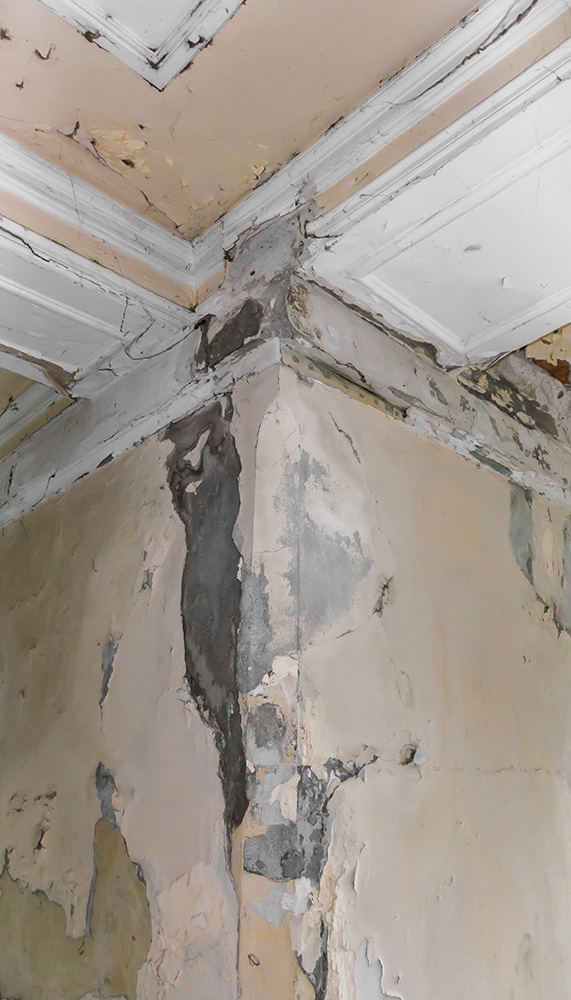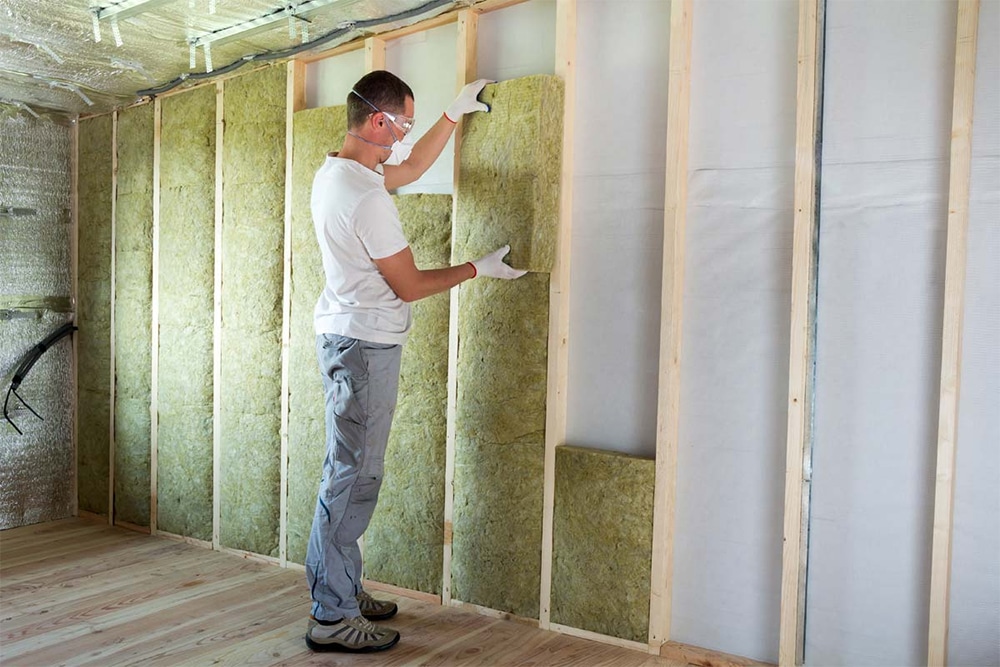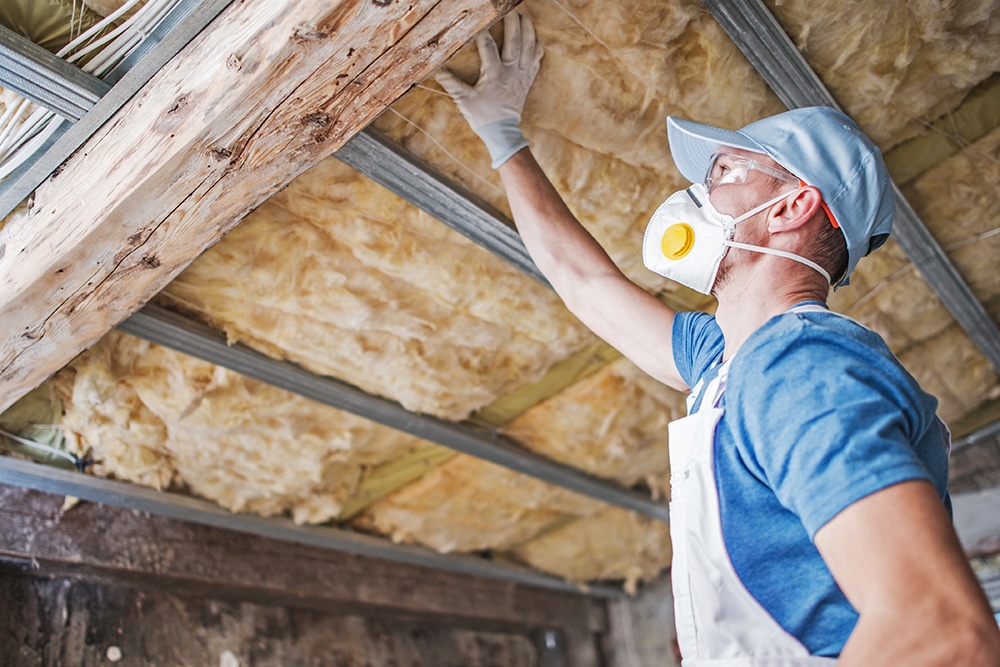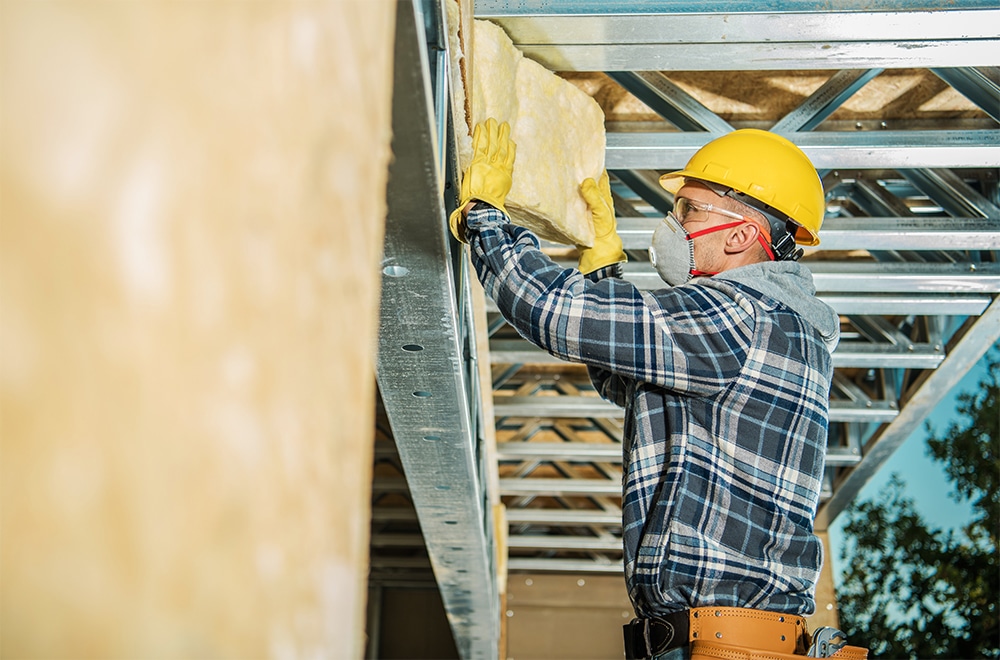A Brief Outline of Cavity Wall Insulation
A Cavity is a gap or empty space, in this case its between two layers of a brick wall, the interior and exterior. Cavity Wall Insulation (CWI) is the process of filling this gap with cavity wall insulation materials such as, blown mineral fibre, Polystyrene beads / granules or Urea Formaldehyde Foam. When retrofitting CWI, holes are drilled in the exterior of the wall and then the insulative material is injected into the cavity.
As part of a government backed scheme to reduce carbon emissions, energy companies were put under pressure to hit energy saving targets. This made them push the benefits of CWI and the cost saving perks it brings. Over the last 20 years, 6 million homes in the UK now have CWI installed. Some of these people were able to have it installed for free costing themselves absolutely nothing as the government or installers would pay.
But, in this massive push to meet targets and move towards reducing carbon emissions before deadlines, some homeowners have actually now discovered that their home is less energy efficient than before… with a growing number of people experiencing colder homes, as well as added damp and mould problems.
This is due to the rush in trying to meet these targets, cowboy installers in some cases have installed CWI into homes that were not suitable or may have rushed the install process and ended up doing a poor job as they prioritised financial gain over reducing carbon emissions and meeting government targets to receive more cash from the Government. In some cases there has been degradation of the product used to fill the cavity, this tends to mainly be Urea Formaldehyde, as it breaks down it releases toxic carcinogenic gases.

Problems CWI Can Cause
There have been a lot of cases of cowboy installers who only wanted to gain financially from the government grant, meaning there are a high number of homes where CWI has been installed that were not suitable for installation. Or cases of rushed and poorly installed CWI which has left homes in a less energy efficient state, than before it was actually installed as well as damp, condensation and mould.
The most frequent problems caused by dodgy CWI are condensation, damp and mould. Homes that are exposed to wind-driven rain and have been fitted with CWI are unsuitable for CWI as the rainwater can penetrate the external brickwork and then be ‘carried’ across the cavity using insulative material this will then seep through to the internal walls, leaving unsightly damp spots and potentially lead to worse problems such a mould.
The wall cavity is there for a reason; bricks and mortar are slightly porous meaning they can absorb moisture which can carry through the bricks. The reason the cavity is there is to allow air flow meaning the moisture that penetrates the external brick layer can dry. This cavity is extremely important in homes that are built with either a steel or wooden frame.
If moisture is allowed to sit near the framework of the building because the cavity is filled with insulation, then corrosion and rot can start to occur, potentially making the home structurally unsafe – which can be problematic when trying to sell or buy as mortgage lenders are aware of how damaging it can be.
In some cases, it was fitted into walls where the cavity was just too small, again leading to penetrative damp problems when CWI has been installed. Most of these problems are not immediately apparent and usually take a good few years for the signs to become apparent, when they do become apparent they can cause issues to the plaster and interior décor like wallpaper and paint, which can begin to peel and flake away this can eventually lead to a mould problem, which in turn can affect the occupants health.
If any of the problems mentioned apply to you, then its best to speak to a surveyor and have them take a look at the problems you may have and if it turns out that you were a victim of unsuitable installation or just poor installation of CWI then its best to talk to CIGA (Cavity Insulation Guarantee Agency).
Alternatives to Cavity Wall Insulation
Some homes are suitable for CWI so it may be worth speaking to an installer who will be able to tell you if your home is suitable for CWI, just make sure they are a CIGA registered installer.
If you are certain your home doesn’t have a cavity, don’t worry as there are still energy saving alternatives to CWI.
Or if your home isn’t suitable for CWI or you have just had CWI removed and you are looking at alternatives we have listed a few below.
1. Internal Solid Wall Insulation


There are a couple of different methods of carrying out internal wall insulation, but for the most part it consists of dry lining the internal walls of your home with flexible thermal linings, which are held in place by a stud framework. However, the insulative materials used vary from installer to installer, these methods reduce floor space in rooms as the studs, plasterboard and plaster have to be applied.
There are companies that offer insulative material spraying where they spray the walls with an insulative material for example cork and then overskim the material with plaster meaning the whole process only adds 8mm to the wall. An example of a company that offer specialist insulative spraying is Corksol.
2. External Solid Wall Insulation
External Wall Insulation carries two benefits, it can increase the thermal performance and energy efficiency of the property as well as the aesthetic external appearance. It is done by securing an insulative layer to the existing external wall, this is then covered with a protective render or a decorative finish.
Due to the technique, there are many different finishes you can chose from as cladding is the preferred method to finish it, for example: aluminium panels, timber panels, brick, stone, or clay tiles. It can reduce heating bills by up to 25% and stop moisture/condensation problems, whilst also improving the look of a building/property, however it is probably the most expensive method of trying to increase your properties energy efficiency.


3. Thermal Liner
Thermal Liners such as Wallrock are an ultra-thin insulating wallpaper, you apply them to the wall the same way you would with normal wallpaper and once applied you can paint or wallpaper over it. The Thermal Liner acts as a barrier keeping the heat in the room, whilst also allowing the wall to breathe and deter any chance of damp or mould problems.
It is definitely a cost effective method of reducing your heating bills, it is also much more space efficient than regular internal wall insulation taking up very limited space which can work well in places like flats and apartments where space is sometimes is slightly prohibitive.


4. Insulating Paste
This product works in a similar way to the Thermal Liner, it works by trapping and reflecting the heat back into the room, with it being a paste it is similar to plaster so can be applied directly to walls, it may be a better option if you have awkward shaped walls in your home where thermal lining would be difficult to fit. One product that is highly recommended is Aerotherm, which uses Aerogel which is a super insulating material which was developed by NASA for there space program!
Both thermal liners and insulating pastes are not as effective as both the external and internal solid wall insulation techniques in terms of energy saving, however they are still cost-effective methods and still provide a good amount of increased energy efficiency.
5. Exterior Wall Coatings
Rather than interior coatings there is a new ground-breaking coating based on the latest nanotechnology that is a superior external wall insulator. ProPerla masonry crème coating penetrates deep into the surface as it is absorbable (up to 17mm). It dries transparent and it looks as if nothing has been applied to the wall, basically acting like an invisible barrier for the external wall. The product is revolutionary and comes with a 20-year guarantee and has the ability to reduce water absorption by more than 95%. This means that if penetrative damp is reduced then the heat is not being transferred to the moisture that would normally be present in the wall, overall reducing heat loss in an indirect way.
6. Loft Insulation
The most common and cost-effective alternative to CWI. After your homes walls the roof is the second place where it loses heat from, in fact we lose around 25% of heat through the roof. So, it makes perfect sense to make sure you either have roof insulation installed or make sure that it is working efficiently if you already have it installed, it may need upgrading using more modern and energy efficient materials.


How Could Housing Triage Help You?
If you do have a problem with your CWI and it is causing damage to your home, you may be able to claim compensation. This is due to the 25 year guarantee from the Cavity Wall Insulation Guarantee Agency (CIGA).
To find out if you are eligible, book in a FREE survey with Housing Triage. We will arrange for a surveyor to assess your property and confirm that this issues you are experiencing are in-fact down to your CWI.
Once we have confirmed that there is an issue within your cavity walls, we will begin the claims process. Housing Triage will take care of all the paperwork to ensure you receive compensation.
The average claim is £23,000, which would be enough to cover the cost of removing the insulation from your walls and to repair the damage it has made to your home.
If you would like to start your claim today, use our claim form to provide the information we need to get your claim started.

